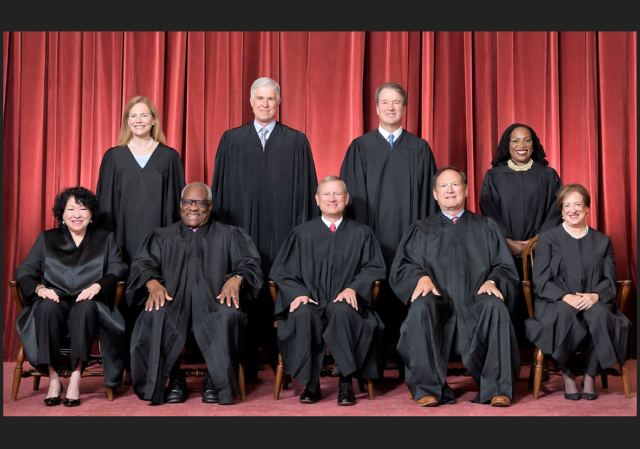Supreme Court Issues Guidelines As To When Public Officials Can Block Constituents on Social Media

The U.S. Supreme Court issued two opinions on Friday resolving a First Amendment conflict in the lower courts over public officials’ social media use. The Court unanimously held that officials using personal social media accounts to share personal and government information may block constituents under some circumstances. Legal Insurrection covered oral arguments in the cases.
The Court held that a public official who shares government information on a personal account may block constituents if the official had not “possessed actual authority to speak on the State’s behalf on a particular matter” and had not “purported to exercise that authority when speaking in the relevant social-media posts.”
In Lindke v. Freed, a city manager blocked a constituent over alleged disparaging remarks. In O’Connor-Ratcliff v. Garnier, two school board officials blocked constituents for alleged spamming.
In both cases, the public officials identified themselves as such on their accounts, used their accounts to share personal and government information, and blocked constituents who had criticized their official conduct. Neither account purported to be an official account, and the government information shared was available from official sources.
The cases hinged on whether the officials’ blocking behavior constituted state action subject to the First Amendment because the officials disseminated government information on their personal accounts. The officials argued that although they shared some information related to their positions, they shared that information as private citizens, thus immunizing their blocking behavior from First Amendment scrutiny.
The Court heard the appeals to resolve a split between the Sixth and Ninth Circuits on the test for determining what constitutes state action when an official blocks a user on social media.
In O’Connor-Ratcliff, the Ninth Circuit applied an “appearance and purpose” test, which asks whether the official’s social media use had the appearance of serving a governmental purpose. In Lindke, the Sixth Circuit applied a “duty and authority” test, which asks whether an official had a legal duty to use a social media account to disseminate government information or whether the official acted pursuant to his legal authority when using his social media account.
The Court’s test, which looks to authority and the purported exercise of authority, incorporates elements from both approaches into a two-prong test.
Similar to the Sixth Circuit’s approach, the Court held an official must first have the authority to speak for the government on a matter for blocking to constitute state action.
The second prong announced by the Court, the purported exercise of authority, incorporates an element from the Ninth Circuit’s approach. The Court stated that the appearance of an account—whether it looks official—can help establish the purported exercise of authority leading to state action.
The Court also held that when an official includes a disclaimer that his account is solely for personal use, “he would be entitled to a heavy presumption that all of his posts were personal.”
The Court remanded both cases to the lower courts for reconsideration in light of the newly announced rule.
Lindke opinion:
O’Connor-Ratcliff opinion:
CLICK HERE FOR FULL VERSION OF THIS STORY